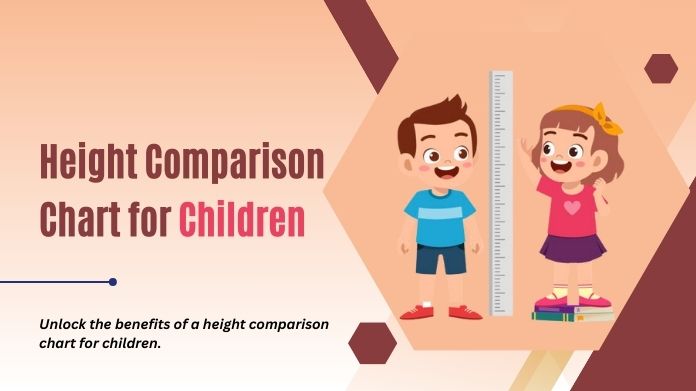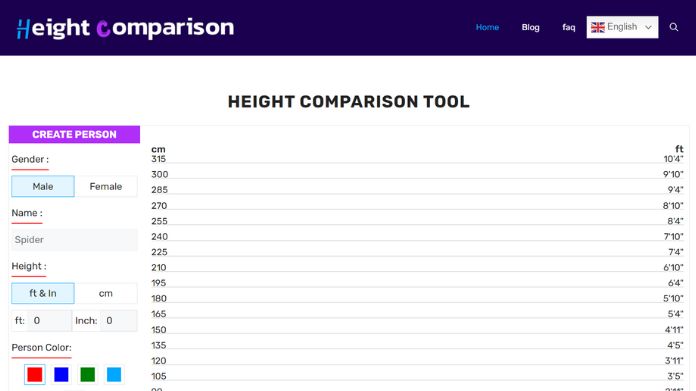Understanding a child’s growth and development is a central concern for parents, educators, and healthcare professionals.
A valuable tool in this journey is the Height Comparison Chart, a visual representation of average height ranges for children of various ages. In this guide, we will delve into effectively utilizing Height Comparison Charts.
From decoding growth milestones to choosing the correct chart based on age and gender considerations, we aim to empower you with the knowledge to navigate these charts confidently.
Join us on a journey that demystifies the significance of Height Comparison Charts and provides practical insights for nurturing the healthy growth of the young ones in our care.
What is the Height Comparison Chart for Children?

The height comparison for children compares a child’s height to the average height of children of the same age and gender. It provides a range of heights considered typical for a specific age group.
Pediatricians and parents commonly use this chart to monitor a child’s growth and development. Comparing a child’s height to the average range can help determine if the child is growing normally or if there may be any potential growth issues.
How to Use Height Comparison Chart for Children?

Using a height comparison chart for children is a helpful tool for tracking and monitoring their growth. Here are some steps to effectively utilize the chart:
1. Obtain a Height Comparison Chart: Look for a reliable and accurate height comparison chart. You can find them online or consult with your child’s pediatrician.
2. Measure Your Child’s Height: Use a measuring tape or a wall-mounted height measurement tool to accurately measure your child’s height. Make sure they are standing barefoot and have their back against the wall.
3. Locate Your Child’s Age: Once you have measured your child’s height, find their age on the chart. The ages are usually listed on the left side of the chart, while the corresponding heights are listed across the top.
4. Trace the Height Percentile: After locating your child’s age, follow the row horizontally to find their height percentile. The percentile indicates how your child’s height compares to other children of the same period. For example, if your child’s height falls within the 75th percentile, they are taller than 75% of their age.
5. Monitor Growth Over Time: Use the chart periodically to track your child’s growth. Plot their height and percentile on the chart to visualize their progress. This will help you identify any significant changes or potential concerns.
6. Consult with a Healthcare Professional: If you have concerns about your child’s growth, consult their pediatrician or healthcare provider. They can provide further guidance and address any questions or issues.
Remember, height comparison charts are a general guideline and should not be the sole determinant of your child’s growth. Each child develops at their own pace, and other aspects, such as genetics and overall health, play a role.
Benefits of Height Comparison Charts
Height comparison charts can provide numerous benefits.
First, they allow individuals to understand and compare their height to that of others visually, providing a sense of perspective and context. This can help boost self-esteem and improve body image.
Additionally, height comparison charts can be helpful in various industries, such as fashion, sports, and ergonomics. Designers can use these charts to create clothing and accessories that cater to specific height ranges.
Athletes and coaches can utilize them to identify optimal height requirements for certain sports positions. Ergonomics experts can use height comparison charts to design workspaces and equipment accommodating individuals of different heights, promoting comfort and productivity.
It is beneficial in healthcare settings. They can assist doctors and nurses in monitoring the growth and development of children, ensuring they are within the normal height range for their age. These charts can also help diagnose certain medical conditions related to abnormal growth patterns.
It can be used in research studies to analyze height trends across different populations. This data can provide valuable insights into factors influencing height variations, such as genetics, nutrition, and socioeconomic factors.
Height comparison charts offer numerous benefits regarding personal understanding, industry applications, healthcare, and research.
Final Note
In embracing the wealth of information offered by Height Comparison Charts, we equip ourselves with the ability to make informed decisions, provide tailored support, and foster an environment where every child can thrive.
As we conclude, let us carry forward the knowledge gained here as a tool for measuring the holistic well-being of the children in our care.
May the journey of growth be marked by compassion, understanding, and a celebration of the unique heights each child reaches.






